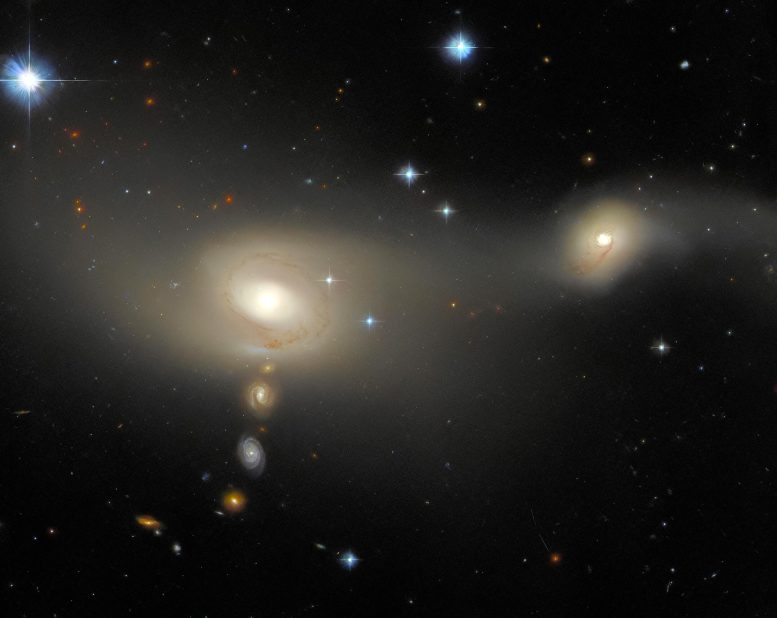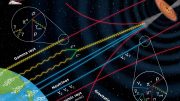
This Hubble Space Telescope image captures Arp-Madore 2105-332, a peculiar galaxy system in the Microscopium constellation. It is notable for its emission-line galaxies, indicating vibrant star formation. It’s featured in the Hubble Picture of the Week, with galaxies named using astronomical coordinates. Credit: ESA/Hubble & NASA, J. Dalcanton, Acknowledgment: L. Shatz
Arp-Madore 2105-332, 200 million light-years away, comprises peculiar, emission-line galaxies active in star formation, as revealed by Hubble.
This image features an interacting galaxy system known as Arp-Madore 2105-332, which lies about 200 million light-years from Earth in the constellation Microscopium. Like other recent Hubble Pictures of the Week, this system belongs to the Arp-Madore catalog of peculiar galaxies.
The wonderful quality of this image also reveals several further galaxies, not associated with this system but fortuitously positioned in such a way that they appear to be forming a line that approaches the leftmost (in this image) component of Arp-Madore 2105-332, which is known individually as 2MASX J21080752-3314337. The rightmost galaxy, meanwhile, is known as 2MASX J21080362-3313196. These hefty names do not lend themselves to easy memorization, but they do actually contain valuable information: they are coordinates in the right ascension and declination system used widely by astronomers to locate astronomical objects.
Both the galaxies are of a type known as emission-line galaxies. This simply means that, when observed with spectrometers, the spectra of both galaxies exhibit characteristic bright peaks, known as emission lines. This is distinct from, for example, absorption-line galaxies whose spectra contain distinct gaps, known as absorption lines. Emission lines are produced when gases are very hot, and therefore have sufficient energy that the atoms and molecules are ‘excited’ and emit light. In other words, emission-line galaxies are highly energetic places, marking them out as likely hotbeds of star formation.
As with many galaxy types, categorizing a galaxy as an emission-line galaxy does not exclude it from having other descriptions that refer to its other properties. Arp-Madore 2105-332, for example, is also a ‘peculiar’ galaxy, reflecting the atypical shapes of its two constituent galaxies.









Be the first to comment on "Galaxies on Parade: The Stunning Stellar Show From Hubble"